For the last decade or so, the perfume industry has seen something of an oud explosion.
From Tom Ford’s Oud Wood, to Lâncome’s Oud Bouquet, to Versace’s Oud Noir, almost every brand on the market has released their own oud perfume. Even Ralph Lauren had a crack at it with Polo Supreme Oud.
But just what in the blue blazes is oud? And why is it suddenly in seemingly every perfume nowadays?
The truth is, oud is one of the most ancient perfumery ingredients of all. It also happens to be one of the most expensive raw materials in the world.
Oud has been used as an ingredient in perfumes and incense for thousands of years. It is derived from the wood of the aquilaria tree infected with a certain mold. The mold causes the tree to produce a resin, called aloes, infuses the wood with a beautiful fragrance.
But that’s only scratching the surface. Let’s take a closer look.
What Is Oud?

As I’ve already mentioned, oud, also known as agarwood or aloewood, is a kind of wood that is harvested from two genuses of tree called Aquilaria and Gyrinops.
However, “oud” doesn’t refer to just the wood from the tree. Wood from Aquilaria and Gyrinops trees can only be considered as “oud” if it has first been infected with a particular mold, called Phaeoacremonium parasitica.
The tree is infected by the fungus when Ambrosia beetles, a species of beetle known for being expert tree eaters, carve tunnels into the still-living wood and release Phaeoacremonium parasitica spores into the heartwood of the tree.
Phaeoacremonium parasitica affects (and kills) a number of tree species throughout the world. However, only Aquilaria and Gyrinops trees can produce agarwood. This is because a particular kind of magic happens due to the reaction of these trees to the fungus.
Once infected with Phaeoacremonium parasitica, the trees begin to secrete a particular resin, called aloes or agar, which disguises the damage the fungus is inflicting upon the tree. Under normal circumstances, the wood of Aquilaria and Gyrinops trees is light in color and odorless. However, when the trees begin to produce agar, the color of the heartwood slowly darkens as more and more resin suffuses the wood.
The result is a dark, dense, and highly aromatic wood. This wood is then harvested and either sold in its raw form as chips of oud wood, or shipped off so that the resinous oils in the wood may be extracted for use in perfume.
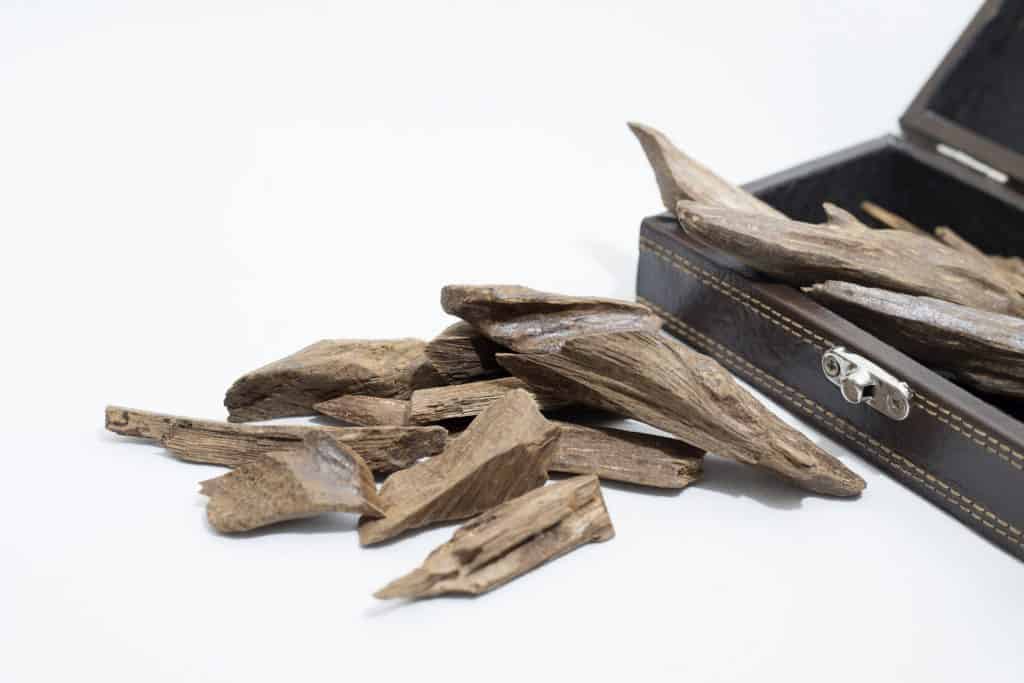
However, infection of Aquilaria trees occurs relatively rarely in the wild – only about 7 out of 100 trees in a grove might be naturally infected. What’s more, one kilo of oud produces just 1ml of oil.
This scarcity is the reason that oud is so precious, and so expensive.
Annually, the oud industry brings in about 6 billion dollars in profit. One kilo of average grade oud costs around $5,000, and for higher grades, $30,000 per kilo is considered a good starting point. One liter of high quality oud oil can cost upwards of $80,000.
All of that works out to making this rare, fungus infested wood more valuable than gold.
Where Is Oud Produced/Grown?
Aquilaria and Gyrinops trees grow exclusively in Asia, and favor tropical climates.
The member of the Aquilaria genus that was formerly the most widely favored source of oud, Aquilaria malaccensis, can be found in large swaths of India, Thailand, Laos, Indonesia, and Malaysia.
However, due to overharvesting for the oud industry, Aquilaria malaccensis is now considered critically endangered, and so other, less plentiful members of the genus are now favored.
What Does Oud Smell Like?
Of course, you’re probably wondering how oud smells.
The idea of wood infected with a parasitic mold certainly doesn’t sound appealing. Yet oud has been used in a variety of different cultures for millennia. Surely there’s got to be something to it.
In my view, smelling oud in its natural, unalloyed form, is both a shocking and transcendent experience, and despite the price, something that I recommend people try at least once if they can.
Adjectives used to describe natural oud are usually something along the lines of “fecal”, “barnyard”, “blue cheesy”, “animalic”, or even “poopy”, along with the typical “woody”.
But oud can also be sweet, spicy, floral, smoky, even vanillic.
It is an incredibly complex material. Like wine, the smell of oud can change dramatically based on where it was grown.
For instance, oud from India tends to have more of that “animalic” or “barnyard” kick, at least upon first application. Laotian oud can be quite funky, but also has fruity tones. Cambodian oud is absolutely delicious (and one of the most popular varieties for good reason), with a rich, velvety, almost chocolatey aroma.
Essentially, though, the overall profile of oud could be said to be woody (obviously), rich, and slightly (depending on the variety), animalic.
As you might expect, it is something of an acquired taste.
The great diversity of oud has led to the development of quite the subculture of “oudheads” who seek out rare and exotic oud oils and chips.
However, due to the exorbitant price and scarcity of oud, most brands making oud perfumes use it quite sparingly.
Higher end perfumes, like Dior’s Oud Ispahan or Louis Vuitton’s Ombre Nomade contain some trace amounts of real oud (and are priced to reflect that), but the vast majority of brands use synthetic oud, aroma chemicals designed to mimic the smell of the genuine article.
The smell of oud can also be recreated by assimilating certain notes together – for instance, a chord of guaiac wood, cedar, incense, leather, sandalwood, and patchouli can sometimes create an “oudy” effect, without actually using any oud at all.
In the designer realm, however, any “oud” in a perfume is going to be synthetic oud. It’s simply too expensive to be used otherwise.
How Is Oud Used?
Oud has been used throughout Asia for millennia.
In East Asia, it is a key component in incense, in addition to being used to carve prayer beads, bowls, and other wooden objects. The market for agarwood is huge in East Asia, and a large part of the soaring value of oud comes from wealthy Chinese investors.
But it is in the Middle East where oud occupies a place of centrality both in incense making and perfumery.
You need only visit the opulent malls and department stores of Dubai or Doha to smell the perfume of burning oud being circulated through the air ducts, in addition to wafting off of every person within a hundred miles.
Oud is burned as bakhoor, oud and wood chips or powder infused with perfume oils, to fumigate the home and to perfume one’s clothes.
Oud oils are often applied as a base layer before spraying on another oud-based perfume on top. In the Middle East, it’s common to have one’s clothes, hair, skin, and home all redolent of oud.
No wonder they smell so damn good.
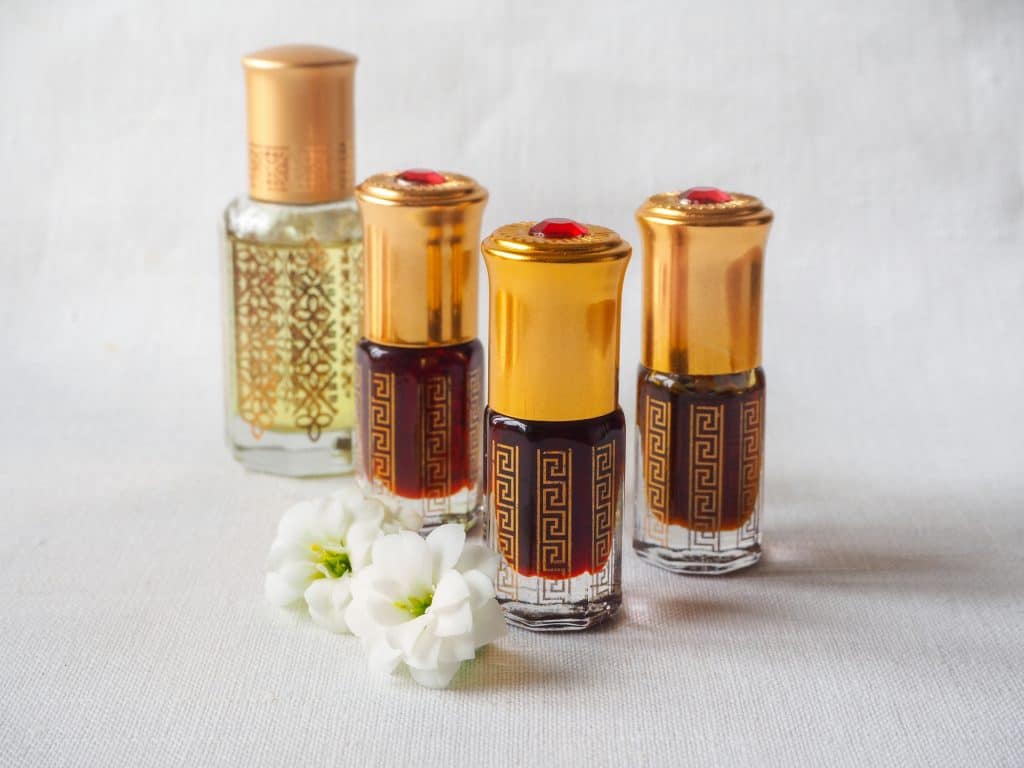
In Middle Eastern perfumery, oud is king. That nameless “Middle Eastern scent” you might have smelled before more than likely owed a lot of its scent profile to oud.
Oud is almost always blended with other ingredients to soften the blow of natural oud. A classic combination would be oud with rose, saffron, patchouli, and spices, but these days there are tons of variations on the theme of oud to explore.
There are lush, ladylike ouds (Maison Francis Kurkdijan’s Oud Satin Mood, Lâncome’s Oud Bouquet), rough and tumble “masculine” ouds (Penhaligon’s The Uncompromising Sohan, Dior’s Leather Oud, Amouage’s Interlude Man), and well-blended, mass appealing ouds (Initio’s Oud For Greatness, Mancera’s Aoud Vanille, Byredo’s Oud Immortel).
Although the smell of oud will always be “different” from what Western palettes are used to, oud perfumes have saturated the market to the point that there is more than likely something out there for everyone.
So get out there and try an oud perfume. There’s more than likely one, or two, or ten available to sample at your local department store.
You just might acquire a taste for this rich, complex, and fascinating smell.
What Should I Choose As My First Oud Fragrance?
If you don’t want to jump into the deep end your first time around, don’t panic. There are a number of “beginner ouds” out there which can gently ease you into it.
Here are a few suggestions.
For Women
Designer
- Versace Pour Femme Oud Oriental
- Estée Lauder Amber Mystique
- Gucci Gucci Guilty Oud or Gucci Oud
- Lâncome Oud Bouquet
- Oscar de la Renta Midnight Amber
Niche
- Arabian Oud Kalemat Black
- Maison Francis Kurkdijan Oud Satin Mood
- Montale Oudmazing
- Atkinsons Oud Save the Queen
- Penhaligon’s The Bewitching Yasmine
For Men
Designer
- Versace Pour Homme Oud Noir
- Gucci Intense Oud
- Tom Ford Oud Wood
- Hugo Boss Boss Bottled Oud
- Dunhill Dunhill Icon Absolute
Niche
- Arabian Oud Kalemat Black
- Montale Honey Aoud
- Atkinsons Oud Save the King
- Byredo Accord Oud
- Jo Malone Oud & Bergamot
And a few from my own collection, designer and niche, which I think could be suitable for the neophyte:
Lattafa Qa’ed
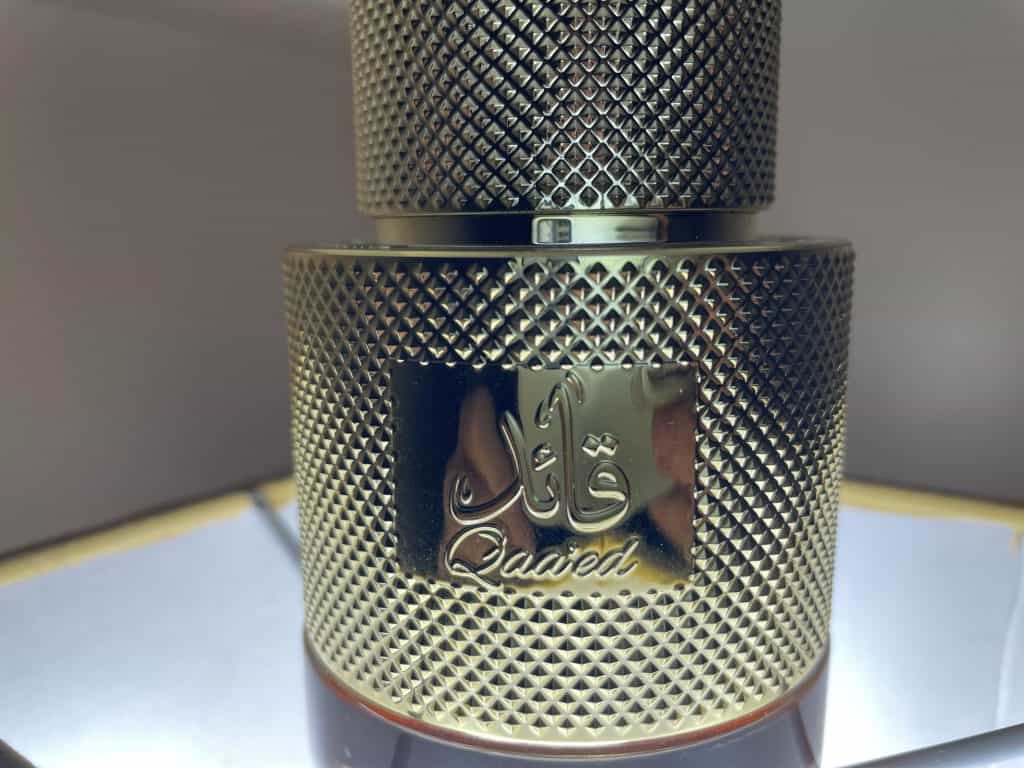
A rich blend with warm spices like cinnamon and cardamom, woods, and cocooning vanilla, amber, and leather around a synthetic oud accord. A genuine Middle Eastern oud that won’t break the bank – bottles go for around $20, making this an oud perfume that most anyone can afford.
Arabian Oud Kashmir
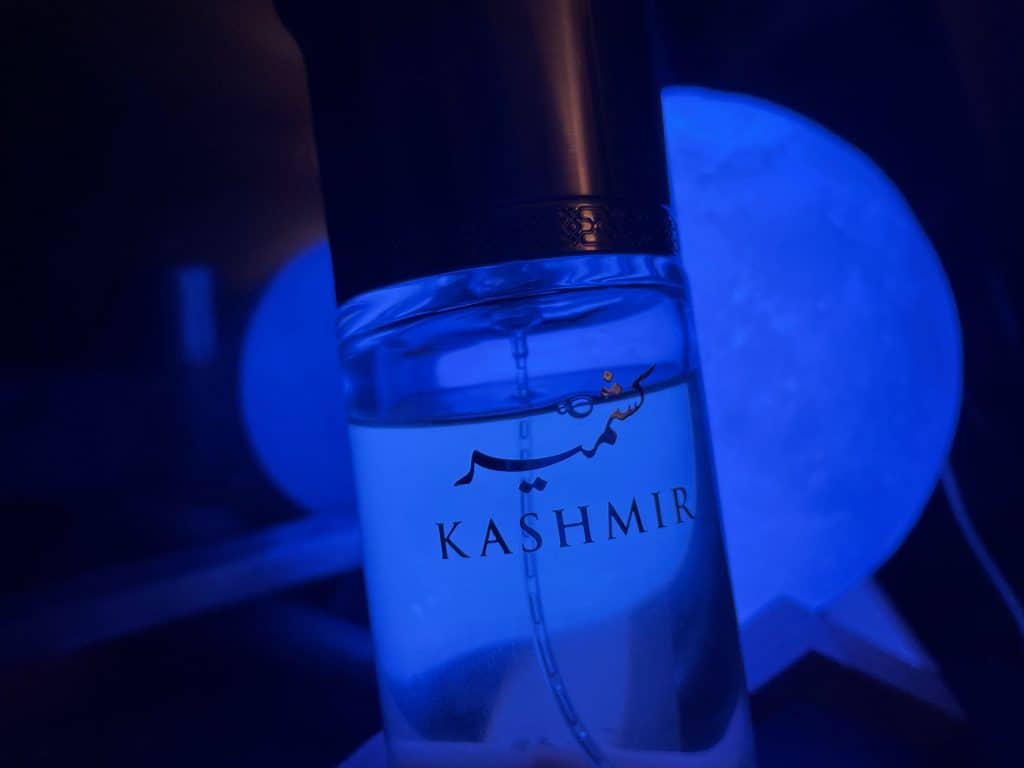
Most oud perfumes tend to be warm, spicy, and perfect for the cold weather. Kashmir, from the Middle East’s premier perfume brand Arabian Oud, however, takes a different approach. Kashmir is a refreshing and uplifting oud perfume, opening with juicy plum, black currant, and yuzu before drying down to a smooth and creamy base of rose, vanilla, jasmine, and white oud.
The perfect oud fragrance for someone who might not be into spicy scents. It’s on the expensive side, but the value for money is superb – the presentation is outstanding, and there is certainly some real oud lurking around in here.
Guerlain Santal Royal
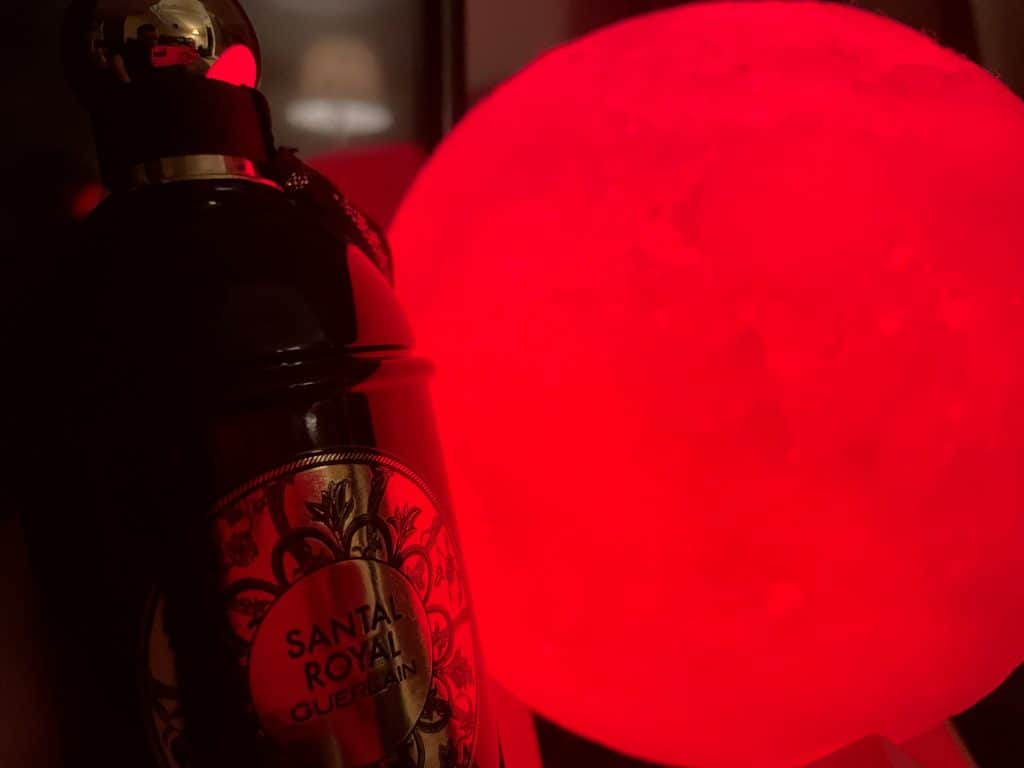
East meets West in a bottle, Santal Royal is an immaculately blended creation that combines an opulent oud perfume (that really does smell authentic) with French sensibilities. Smoky oud, creamy sandalwood, rugged leather, and juicy peach come together in an exotic and addictive perfume that will absolutely make you stand out. On the challenging side of beginner ouds, but I believe that anyone can appreciate the beauty of this creation.
The Final Word
So, to recap:
Oud is wood from aquilaria trees that has been infected with a parasitic mold. The tree secretes a fragrant resin, called aloes, as a reaction to the infection. The aromatic resin-soaked wood is then harvested and used for perfume and incense.
This resin-soaked wood is one of the oldest, most precious, most expensive, and most sought after raw materials on earth.
There is, unfortunately, only so much that can be written in a single article. A lot was left on the cutting room floor, and really, all of this is just scratching the surface. There is a whole rich and fascinating world of oud out there that other, more experienced authors assuredly can write about more effectively than I can.
I hope, however, that this article has given you a taste of that world, and a way to begin your exploration of it.
So try out an oud perfume the next time you go by the department store, or buy some bakhoor to burn in your home. You might just find your new obsession.




